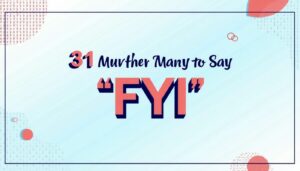In professional and personal communication, expressing openness to further contact is essential. “Don’t hesitate to contact me” is a common phrase, but there are numerous other ways to offer assistance and encourage engagement.
Using alternative expressions can help you sound more approachable, formal, or casual, depending on the context. These variations can elevate your communication, ensuring you remain accessible and inviting to others.
Respond for Additional Help
This phrase is an alternative way to offer further assistance. It suggests that the person should respond if they need any more help or clarification. It’s often used in professional emails or casual conversations to invite further engagement.
Example:
If you need any further clarification on the project, feel free to respond for additional help.
Reach Out for Assistance
“Reach out for assistance” is a slightly more informal way of encouraging someone to contact you. It’s ideal for casual work environments or among colleagues who have an established rapport.
Example:
Don’t hesitate to reach out for assistance if you’re having trouble navigating the new software.
Available for Support
This phrase shows that you are accessible and willing to provide support. It works well in customer service contexts or professional settings where ongoing support is expected.
Example:
Our team is available for support if you encounter any issues with the product.
Further Assistance Required
This phrase implies that if there are additional needs, you’re ready to help. It is typically used in more formal settings, such as after completing a service or providing information.
Example:
Please feel free to let me know if further assistance is required.
Email Again for Any Needs
This phrase invites the person to follow up by email if they have additional questions. It’s a clear and straightforward way to keep the line of communication open.
Example:
Should you need anything else, don’t hesitate to email again for any needs.
Respond to Email for More Help
This alternative focuses on asking the recipient to reply if more assistance is required. It is helpful in scenarios where follow-up communication is needed.
Example:
If you need more help or clarification, simply respond to this email for more assistance.
Suggest Reaching Out for Help
This phrase invites action while maintaining a polite tone. It can be used in both casual and formal settings to suggest that the person can get in touch whenever necessary.
Example:
If anything comes up, don’t hesitate to suggest reaching out for help.
Contact for Further Needs
This option is formal and emphasizes that someone can contact you if they have any further questions or requirements. It’s ideal for professional or customer service scenarios.
Example:
Should you have any further needs, please feel free to contact me.
Offer Help in Professional Emails
This phrase emphasizes offering assistance in formal communication. It’s common in work-related emails where you want to convey availability and willingness to help.
Example:
Please don’t hesitate to reach out if you require any help. I’m here to assist.
Please Do Not Hesitate to Contact Me
A formal, courteous way to offer assistance or invite follow-up. It’s often used in both professional and semi-formal contexts.
Example:
Should you have any questions or concerns, please do not hesitate to contact me.
Don’t Hesitate to Contact Me
A straightforward, warm expression that can be used in a variety of contexts. It shows openness to help without feeling overly formal.
Please Don’t Hesitate to Contact Me
A polite and professional way of offering help. It’s often used in customer service or professional settings to indicate openness.
Do Not Hesitate to Contact Me If You Have Any Questions
A direct way to tell someone they are welcome to ask questions if they arise. Perfect for educational, customer service, or professional email settings.
Example:
Do not hesitate to contact me if you have any questions regarding the new policy.
Offer Assistance Without Expecting Reply
This phrase suggests you are offering help but are not necessarily expecting a response. It’s useful when you want to convey that your offer for support stands without pressure.
Example:
I’m always here to assist—feel free to reach out if needed, but there’s no need to reply unless necessary.
Reach Out for Assistance Informally
This is an informal invitation for someone to get in touch. It works best for personal or casual conversations.
Example:
If you need any help, just reach out for assistance informally. I’m happy to help.
Don’t Hesitate to Contact Me for Further Information
This phrase encourages the recipient to reach out for more details. It’s often used in follow-up communications or inquiries.
Example:
If you need any further information regarding the meeting.
Don’t Hesitate to Contact Me in Spanish
For bilingual communication, this phrase suggests reaching out in Spanish for assistance or questions.
Example:
Si necesitas más información, no dudes en contactarme en español.
Don’t Hesitate to Contact Me Artinya
This is the Indonesian version of the phrase. “Artinya” means “meaning” in Indonesian. This phrase helps communicate willingness to assist in an Indonesian-speaking context.
Example:
Jika Anda membutuhkan bantuan lebih lanjut, jangan ragu untuk menghubungi saya artinya.
Don’t Hesitate to Contact Me If
This phrase opens the door for assistance but is often followed by a specific condition, such as for questions or problems.
Don’t Hesitate to Contact Me Meaning
The meaning behind this phrase is to invite someone to reach out without feeling reluctant or unsure. It is used in both formal and informal settings.
Example:
The phrase “don’t hesitate to contact me” simply means you are encouraged to get in touch if you need help.
Don’t Hesitate to Contact Me Email
In the context of emails, this phrase serves as a polite and professional invitation for further communication.
Example:
Feel free to respond to this email if you require any additional details or support.
Don’t Hesitate to Contact Me Synonym
Synonyms like “Feel free to reach out” or “Don’t hesitate to get in touch” serve the same purpose, offering help and encouraging communication.
Example:
Feel free to contact me if you need anything further.
Don’t Hesitate to Contact Me in Case of Any Questions
A slight variation that emphasizes the likelihood of questions and provides reassurance to contact without hesitation.
Example:
Please don’t hesitate to contact me in case of any questions regarding the instructions.
Don’t Hesitate to Contact Me If I Can Be of Any Help
A softer, more personal way of inviting communication. It implies willingness to assist without being overbearing.
Example:
Let me know if I can be of any help with your new assignment.
Don’t Hesitate to Contact Me at Any Time
This phrase reassures the recipient that you are available whenever they need help. It is especially helpful in customer support or emergency contexts.
Example:
You can don’t hesitate to contact me at any time if you run into any issues with the setup.
Should You Need Any Further Information, Please Do Not Hesitate to Contact Me
A more formal way of offering assistance. It suggests availability and invites the recipient to ask for more information as needed.
Example:
Should you need any further information about the upcoming event, please do not hesitate to contact me.
Please Don’t Hesitate to Contact Me If You Have Any Questions
This phrase works perfectly in formal emails or correspondence, offering the recipient an easy way to reach out if they have doubts.
Example:
Should anything be unclear, please don’t hesitate to contact me if you have any questions.
Should You Need Any Further Information, Please Do Not Hesitate to Contact Me Meaning
In essence, this means you are available for any additional information. It conveys readiness to assist in a courteous and professional manner.
Example:
The phrase simply means, “If you need more details or clarification, don’t hesitate to get in touch.”
Don’t Hesitate to Contact Me Quotes
This can be used as part of professional quotes or emails to convey openness to communication.
Example:
“I am here to help don’t hesitate to contact me for further assistance.”
Don’t Hesitate to Contact Me Reply
A courteous and respectful way to reply to someone, letting them know you’re available if they need further communication or assistance.
Example:
If you have any follow-up questions, don’t hesitate to contact me with your reply.
Please Don’t Hesitate to Contact Me If You Need Further Assistance
A helpful and professional offer of support. This phrase is ideal for closing a message where you’re inviting the recipient to reach out as needed.
Don’t Hesitate to Contact Me Message
A simple and polite message to offer further help or support. It’s ideal in both personal and professional settings.
Example:
Send me a message if you need more details or clarification.
Professional Way to Say Feel Free to Contact Me
In formal contexts, using polite and respectful alternatives like “Please do not hesitate to contact me” or “I’m happy to assist” ensures a professional tone.
Example:
In case you need any further details, I’m happy to assist—please do not hesitate to contact me.
Conclusion
Using a variety of ways to say “don’t hesitate to contact me” allows you to communicate in a way that fits different contexts whether formal, informal, professional, or personal.
By adapting these alternatives to your specific situation, you can maintain a friendly, professional tone while ensuring clarity and openness in your communications.

Mark Tony is a grammar expert with 5 years of experience, specializing in teaching English grammar, enhancing writing, reading, and speaking skills for diverse learners.









